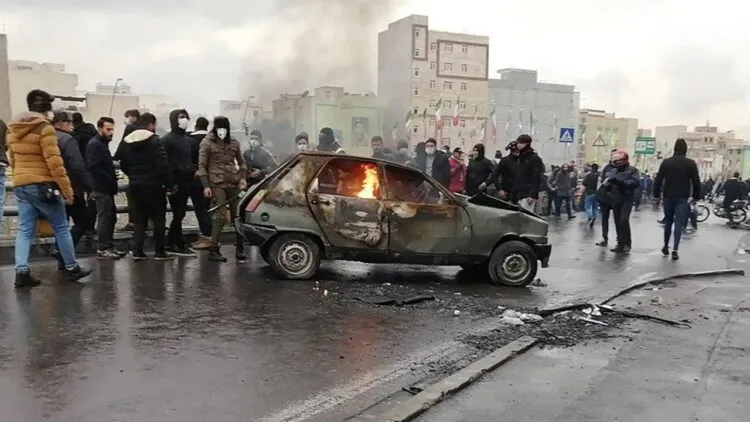While most Iranian cities were rife with protests that erupted after the death of a girl days after her arrest by the morality police, the city of Zahedan saw dozens of people killed by Iranian security forces following the violence that followed the rape of a young woman while she was in police custody.
In the southeast Iranian province of Sistan-Baluchestan, Zahedan is where activists claim that Iranian security forces killed dozens of people during a day they termed “Bloody Friday” as the Iranian government declared the start of an investigation into what they called “violence.”
According to the Iranian Human Rights Organization located in Norway, 63 people perished in violence on Friday. Four more individuals perished in a separate incident in Zahedan after a military aircraft opened fire on a car with an open roof.
88 deaths have been reported thus far, according to the “Baloch Activists Campaign,” according to the most recent telegram update, according to Agence France-Presse.
After two weeks of nationwide demonstrations against Mahsa Amini’s death and days after her detention by the morality police under the pretence of her “improper” clothes, protests broke out in Sistan-Baluchestan.
The protests in Zahedan were sparked by claims made by the provincial police head that a 15-year-old girl was raped while she was being held in custody in the province’s seaside city of Chabahar.
Given that 67 of the 251 individuals murdered in Iran in 2022 were Baluch, according to the Human Rights Organization in Iran, the Baluch citizens of this region endure a number of injustices by the Tehran administration.
Three police stations were targeted, according to statements made by Tehran’s authorities on skirmishes between security personnel and “terrorists” in Zahedan.
The Sunni insurgent organisation “Jaish al-Adl,” which is active in the region, reportedly claimed accountability for the attack on a police post, according to Iran’s Tasnim news agency.
20 people were murdered in clashes in Baluchistan, southeast Iran, on Friday, including two top Revolutionary Guard members, according to the authorities.
Clergyman Mawlawi Abdul Hamid, a powerful figure in Sistan-Sunni Baluchestan’s community, forewarned last week of unrest in Zahedan following the “rape of a girl by a policeman.”
Abdel Hamid rejected “any involvement of Jaish al-Adl or any other group” in the violence in Zahedan on his website on Wednesday.
According to the Encyclopedia Britannica, the region of Baluchistan is located in southeast Iran within the province of Sistan Baluchistan. Its weather is characterised by extremes, such as heavy rain that can cause flooding or extremely high temperatures that last for more than eight months of the year.
This area is one of Iran’s “least developed regions,” according to the Britannica, and it is difficult to live there in “material terms.”
According to a research published in 2014, Baluchistan is distinguished from historical Baluchistan, which encompasses “the border territories of southeastern Iran, southwestern Pakistan, and southern Afghanistan.”
The mediaeval Baloch kingdom, known as the “Khanat of Kalat,” was represented by Balochistan. It was a Baloch state until 1839, when it came under British rule and was divided among Pakistan, Iran, and Afghanistan.
Iran is the only country that calls Baluchistan home; according to the Britannica, the Baluch are “a group of tribes whose presence spreads between Iran, Pakistan, and Afghanistan.”
The “Baluchi” language, one of the oldest spoken by Indo-Iranian groups, is spoken by the Baluch, who are Sunni Muslims.
According to a study, the Baluch were long-distance nomads who travelled with their animals for generations. Many of them were renowned for their commerce.
According to Taj Muhammad Brisik’s book “Baluchi Nationalism: Its Origins and Development,” the Balochs in Iran have been subject to severe repression since the 1950s, when the language and even the chanting of Balochi songs were outlawed.
He explains that the Iranian Baloch people saw themselves as a “independent nation” both during and after the Iranian Shah’s rule ended in 1979, when they began to rebel against the Tehran political establishment and launch a new round of “discrimination and persecution” that affected all facets of life, including the social and economic.
Iranian oppression and traditional Baluchistan are in a “Baloch”

